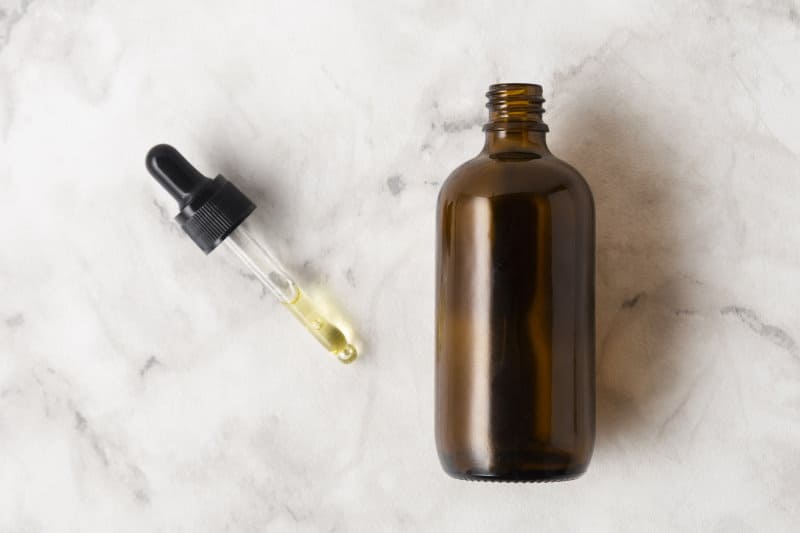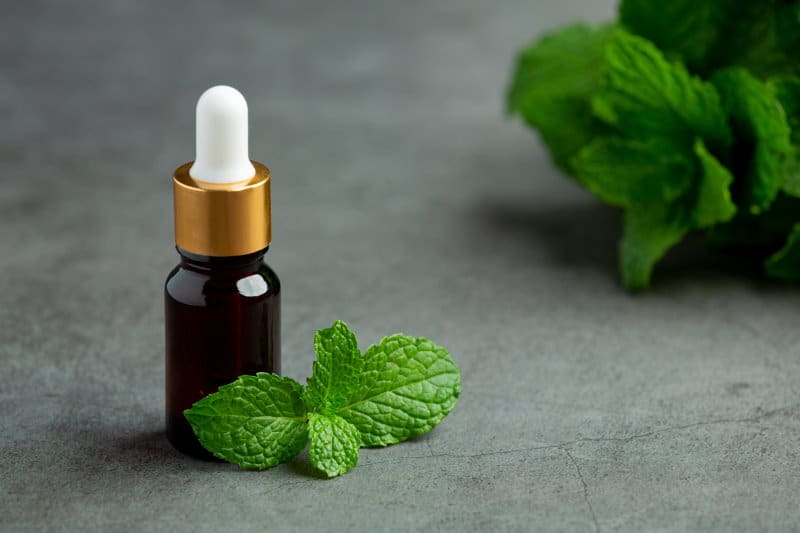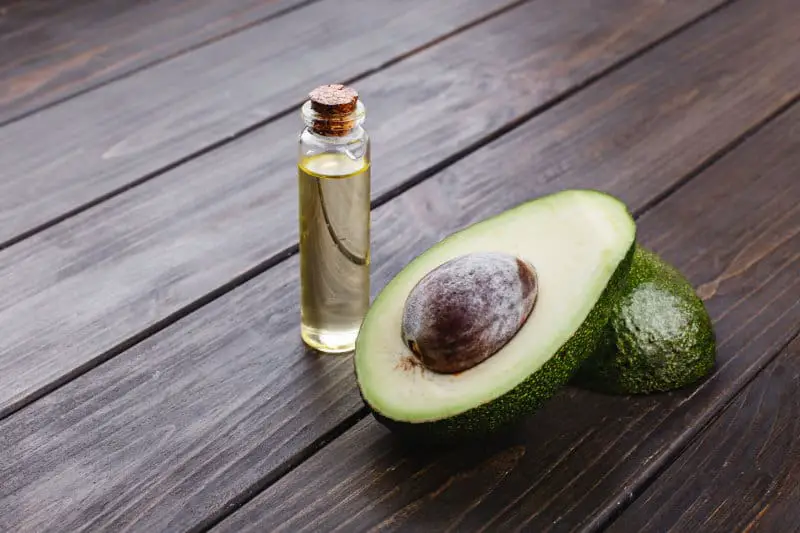There is no shortage of beard products on the market these days. It can feel maddening choosing which beard oil is best for you. Even worse, choosing poorly can be an expensive mistake. A frustrated beardsman might wonder whether making his own beard oil is a better option.
Not only is making beard oil at home a viable option. It also provides an excellent opportunity to create a high-quality, zesty facial hair product tailored to your face and beard! Your homemade beard oil can include luxury ingredients at a fraction of the price of retail brands.
So, let’s dig into what makes a good beard oil and what you should consider before making your own. Then we’ll give you a step-by-step guide to crafting your oil at home, packaging it, and storing it.
What Even Is Beard Oil?
In general, you can think of beard oil as a moisturizing product with styling components. It hydrates both your beard and underlying skin. This makes your facial hair look full, feel healthy, and smell great. It also provides necessary nutrients to your face and follicles, which in turn promotes healthier growth.
Beard oil is mostly composed of one or several carrier oils. A carrier is a natural oil that dilutes more astringent or caustic essential oils. But carrier oils are not mere filler. They are the operative ingredient for beard health. They absorb easily into dry skin and hair, imparting nutrients and hydration.
You can think of carrier oils as the soothing, medicating component of your beard product.
Essential oils provide a more aromatic function. Unlike carriers, which can be measured in ounces, essential oils are added to beard oil in drops. On average, you will find only around twenty drops of essential oil in a one-ounce bottle of beard oil.
That, in a nutshell, is beard oil. It’s a combination of carriers to moisturize your face and beard and essential oils to make it fragrant.
This begs the question, why wouldn’t you make your own at home?
Getting the Proper Supplies

As we get further into the how-to portion of this article, it will become clear that making beard oil at home can be a messy business. Some of the ingredients are corrosive. Many more are strong-smelling. All of them will be annoying to clean up if spilled.
In total, making beard oil requires a good amount of preplanning. Let’s start by getting the proper equipment.
-
Dropper Bottles
When all is said and done, your oil will go in one of these bottles. We recommend getting a good number. The component oils you buy for this project might yield ten to twenty bottles’ worth of finished beard product.
-
Small Funnel
Look for a tincture bottle funnel to prevent spilling when you’re playing mad beard scientist.
-
Measuring Cups and Pipettes
The measuring cups should be small, like the plastic cups you get with a bottle of Pepto Bismol. You won’t need to measure half a cup of anything in this process.
-
Protective Gloves
A pair of plastic gloves will do and are only necessary when you start handling essential oils.
-
Glass Beakers
Okay, we admit these aren’t strictly necessary, but they will make you feel like a hirsute Bunsen Honeydew.
As far as supplies go, that’s pretty much it. You aren’t going to be boiling anything or running your concoction through a centrifuge. One other item that might be useful is a bottle of either StarSan or PBW sanitizer. These no-rinse, scentless cleansers are popular with home beer and winemakers. Soak your equipment in these solutions shortly beforehand to kill any bacteria that could turn your oil rancid.
Now it’s time for the fun part, choosing your ingredients!
Choosing Your Carriers
Let’s pause for a moment to talk carrier oil. These products are not unique to beard oil. A fun exercise is to head to your bathroom and look at the ingredients on your personal care products. Anything that claims to condition or hydrate your skin and hair probably has or more of the carriers we are discussing.
To begin, you want to avoid oils that are synthetic or petroleum-based. Pretty much anything from Johnson and Johnson is out of the question. Some of the most popular plant-based oils in high-quality moisturizing products are:
- Argan Oil
- Avocado Oil
- Castor Oil
- Coconut Oil
- Grapeseed Oil
- Hemp Seed Oil
- Jojoba Oil
- Sunflower Seed Oil
- Sweet Almond Oil
There are plenty of other common oils in your home that function great as carriers. For example, both unscented raw sesame oil and extra virgin olive oil make fantastic bases for beard oil.
You don’t need to restrict yourself to one type of carrier oil. As a general rule, most high-end beard oils contain three or four carriers. You will often see a good, utilitarian oil like castor or grapeseed combined with a pricier luxury option like argan oil.
We recommend you invest in a container of jojoba or argan, two of our favorite carriers and staples of high-end grooming products. You’ll be pleased to find that a 16-ounce container of raw argan oil costs only slightly more than a one-ounce beard oil containing argan. It’s hard to beat those savings!
Scents – Both Natural and Distilled

In general, we would not recommend buying 16 ounces of any essential oils. To begin with, you won’t need that much of this product. As we mentioned before, you can measure your essential oil content in droplets.
Essential oil tinctures are also much pricier. Three one-ounce bottles of essential oils might be more expensive than your entire carrier oil supply. So, you can be conservative with these ingredients.
Some popular beard oil essences include:
- Agarwood
- Bergamot
- Cedar
- Chamomile
- Cinnamon
- Citrus – including Tangerine, Orange, and Lemon
- Frankincense
- Juniper
- Patchouli
- Peppermint
- Pine
- Rosemary
- Sandalwood
- Tea Tree
- Tobacco
One of the true joys of making your beard oil at home is finding creative, delectable pairings of aromas. You don’t recommend you combine too many essential oils. An overdone mélange of essences will overpower.
On the other hand, you shouldn’t play it too matchy-matchy. Simply combining two tree scents will leave you smelling like a car’s air freshener. Three citrus smells will give you a beard like a bottle of Sunny D. Be creative!
One great option for securing scents for your at-home beard oil is to purchase a kit with multiple essential oils. We are huge fans of the Lagunamoon Premium Essential Oils Set, which provides twenty one-ounce bottles of essential oils. You get standby’s life Cedar, Sandalwood, and Lemon, as well as fun accents like Geranium, Vanilla, Bergamot, and Tea Tree.
Another fun option you should consider when crafting your beard oil is infusing whole ingredients rather than tinctures. Similar to the way folks make at-home bitters, you can submerge whole cinnamon bark, rosemary sprigs, or orange peels in alcohol to make your own special tincture. You can also let them soak in your oil for a few days and see how it comes out.
Other Fun Additions
Making beard oil is more than just putting scents into carriers. There are plenty of supplemental ingredients that can help your at-home facial hair oil reach new heights.
Here are some other items you should consider adding to your at-home beard oil:
- Vitamin E – It promotes strong, full beard growth and healthy skin. Plus, it helps preserve and stabilize your carrier oil.
- Vitamin C – Similar benefits to Vitamin E, though a tad less effective.
- Biotin – This supplement has shown success in speeding beard growth in some men.
These additions will provide sustenance to your facial hair and skin. Some of them will also stabilize your oil mixture, giving you a longer-lasting product.
Where to Find the Best Ingredients
In this day and age, you can secure pretty much every beard oil ingredient at near-wholesale prices online. Many raw oil producers and essential oil manufacturers have retail shops set up on Amazon. You can also go to a health supplement boutique, beauty store, organic grocery, or salon supplier and find exactly what you are looking for.
We recommend buying your initial supplies and ingredients online for expediency’s sake. Then, you can familiarize yourself with the oil purveyors in your area, so you’ll know where you can buy a new bottle of coconut oil or cedar essence in a pinch.
The Process Step-by-Step

Now, you’re off to the races! You have all your bottles, pipettes, tinctures, and carrier oils, You’re ready to lay out your funnels and your beakers, throw on your gloves and lab coat and get mixing. Here’s your step-by-step process for making beard oil at home:
Step 1 – Clean Your Bottles and Transfering Tools
As the old saying goes, an ounce of prevention is worth a pound of cure. It’s always best to start by sanitizing your equipment. Give your bottles, measuring cups, pipettes, and funnel a douse in no-scent, no-rinse sanitizer.
Alternatively, you can submerge these supplies in a pot of cool water, then bring the water to a slow rolling boil. After a few minutes of boiling, the items will be sterile. Let the water cool before removing them with tongs. Too quick of a temperature fluctuation can lead to shattering glass.
Step 2 – Measure out your Carriers
If your goal is to make a one-ounce bottle of beard oil, then you should fill your bottle most of the way to the top with carrier oil. If you only use one carrier, you can probably eyeball this with a one-ounce bottle and a funnel. If your carrier oil container doesn’t include a dropper, using a pipette to transfer the oil.
We recommend having some fun with your carriers. This is your opportunity to see how various deluxe products work together. Try combining four oils in equal 0.25 oz. portions, using a small measuring cup, then transfer to the bottle. You can combine 0.5 oz. of a more utilitarian carrier like castor oil with two 0.25 oz. measures of higher-end options like jojoba and avocado.
Step 3 – Add Essential Oils and Supplements
Remember, essential oils are intense and sometimes caustic. You should measure their addition in drops. This is why you used almost one full ounce of carrier oil for a one-ounce bottle of finished beard oil.
Using gloves, choose the essences you want in your beard and add them to the bottle, one drop at a time. For a one-ounce bottle, it is probably best not to exceed 20-24 drops of essential oil.
Here is a good point to discuss the rudiments of balancing scents in the fragrance trade.
You should think of your essential oils as being in two camps:
- Top notes – these are the first scent you detect in an aromatic product. They are often sharp and intense, like citrus or bergamot. You should be sparing with these scents.
- Middle notes – these form the heart of your fragrance. In many perfumes, these tend to be floral, but in beard oil, they hew closer to spice, herb, and pine-needle.
- Base notes – these should underpin your main, middle notes. They are musky and woody, and they tend to linger longer than the other two notes.
In perfumes and colognes, middle note scents dominate the profile, with base notes supporting them and top notes sprinkled on top. In beard oil, we recommend thinking of base and middle notes as co-leads.
For example, if you’re adding 20 drops of essential oil to your one-ounce recipe, you may want to consider a breakout as follows:
| Top Note | Orange | 4 drops |
| Middle Note | Chamomile | 8 drops |
| Base Note | Cedarwood | 8 drops |
Such a balance would provide the wearer with a sharp burst of juicy orange. This would fade quickly to a blend of rich tea and fragrant wood. Over the course of the day, the chamomile will dissipate, leaving a nice cedar aroma.
At this point, you can top off your oil mixture with a couple drops of Vitamin E and/or Biotin oil.
Step 4: Mix!
There’s nothing fancy about this part! Just cap the bottle and give it a vigorous shake.
Then, you will set it down, let it settle, and voila! You’ve got yourself a fine, custom-made oil for your facial hair, all at a fraction of the cost of a professionally-made product with the same ingredients.
Since you’ve already invested in some four to sixteen-ounce bottles of carrier oils, you can turn right around and mix up some additional options. By the time you have exhausted your carrier supply, you might have several years’ worth of high-quality homemade beard oil.
Infusing with Whole Ingredients
The above instructions assume you will limit your ingredients to premade carrier oils and essential oils. But what if you want to work with whole ingredients like herbs, flowers, spices, and fruits. This will be a longer and less precise process, but it can impart subtler and better-integrated fragrance notes.
Using cheesecloth or other mesh material, place your whole ingredients in a glass jar. Be sure to leave the ends of your cloth hanging over the jar’s opening. Then pour your carrier oil over the ingredients until they are fully submerged.
Cap the jar and let it sit for two to three weeks in direct sunlight, shaking it daily. Then, remove the spent ingredients with the cloth. The remaining oil should be nicely scented. You can then complement this fragrant oil with additional drops of essential oils. If it’s too strong, you can dilute it with unscented oil.
Be aware, whole ingredients can carry microbes that will spoil your beard oil. If you open up your homemade oil weeks down the line and it smells off, you might need to discard it.
Storing You Homemade Oil
As with all beard oil, you should store your homemade concoction outside of direct sunlight, in a dark place at room temperature. As long as no nefarious bacteria get into your custom beard oil, it will be good for at least five years.
If that seems like too short a lifespan for you, toss some bottles in the back of the fridge. This will slow down the aging process.
Finding DIY Beard Oil Recipes

As a general rule, there is a recipe for everything on the internet. If you search for homemade beard oil recipes, you will find a plethora of options. Excitingly, these don’t come only from beardsman forums and journals.
Two recipes from non-b we especially love are:
- This subtle four-carrier option from Parsnips and Pastries, which combines cedar with orange and tea tree oil.
- This spicy jojoba-and-avocado oil from Mountain Rose Herbs incorporates pink pepper and sage essences.
If you want to be old school with your facial hair oil research, there are a few books on DIY beard oils, all of which include great recipes.
Get Experimenting!
There you have it. Making beard oil at home is an easy, inexpensive, and rewarding option for creative beardsmen. Once you get the hang of it, you’ll wonder why you ever settled for a store-bought product when you could have a custom-made facial hair fragrance.
Want to take a crack at other DIY beard oil options. Take a look at our recent article on how to make your retail beard oil more effective.

